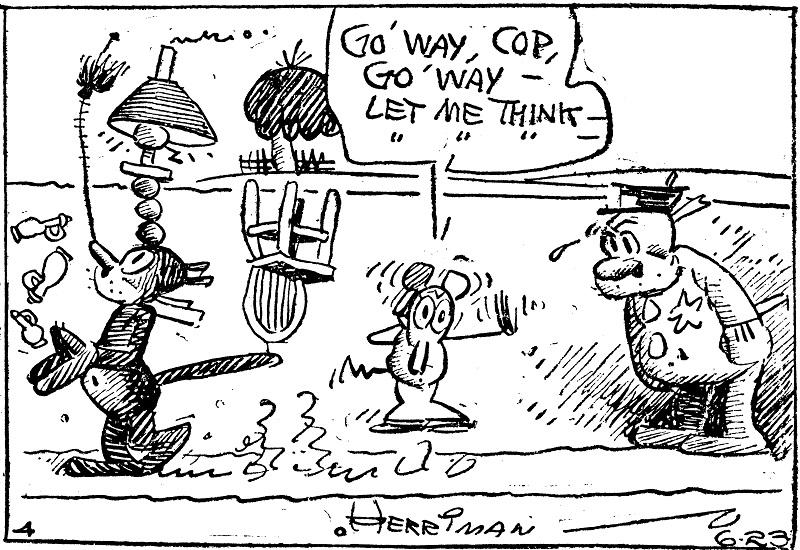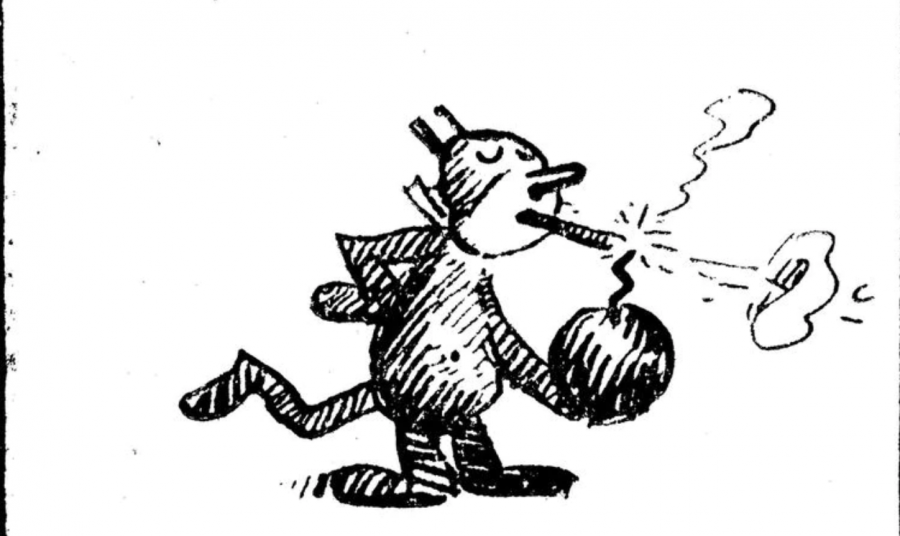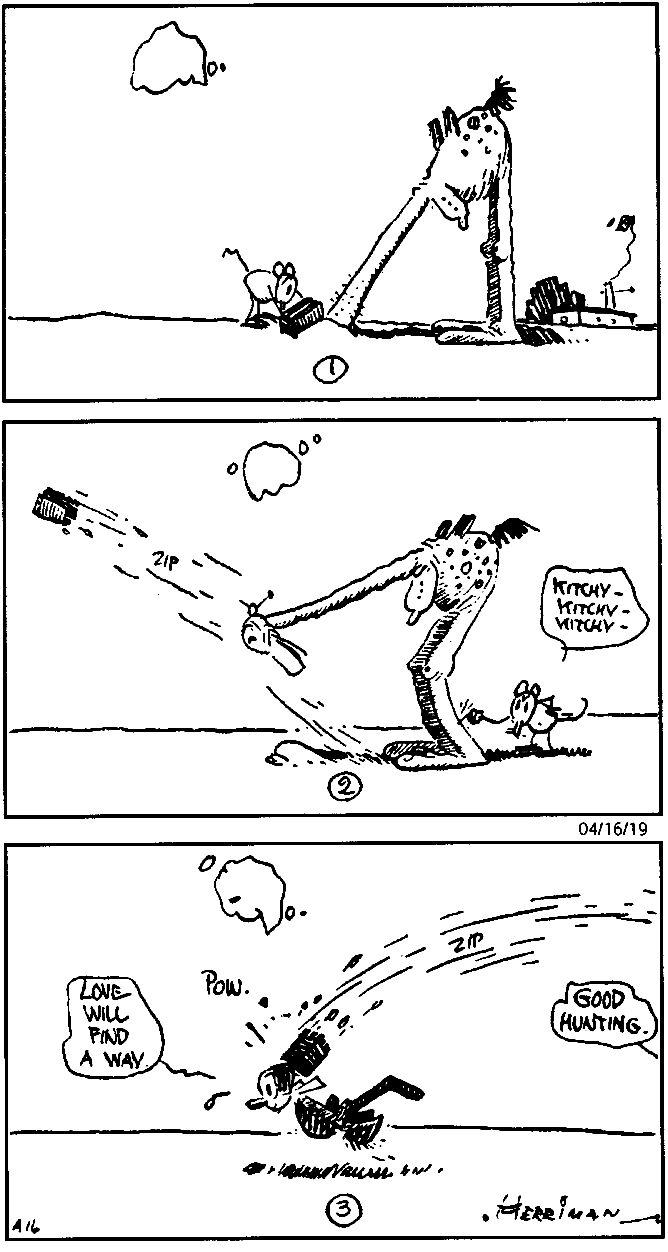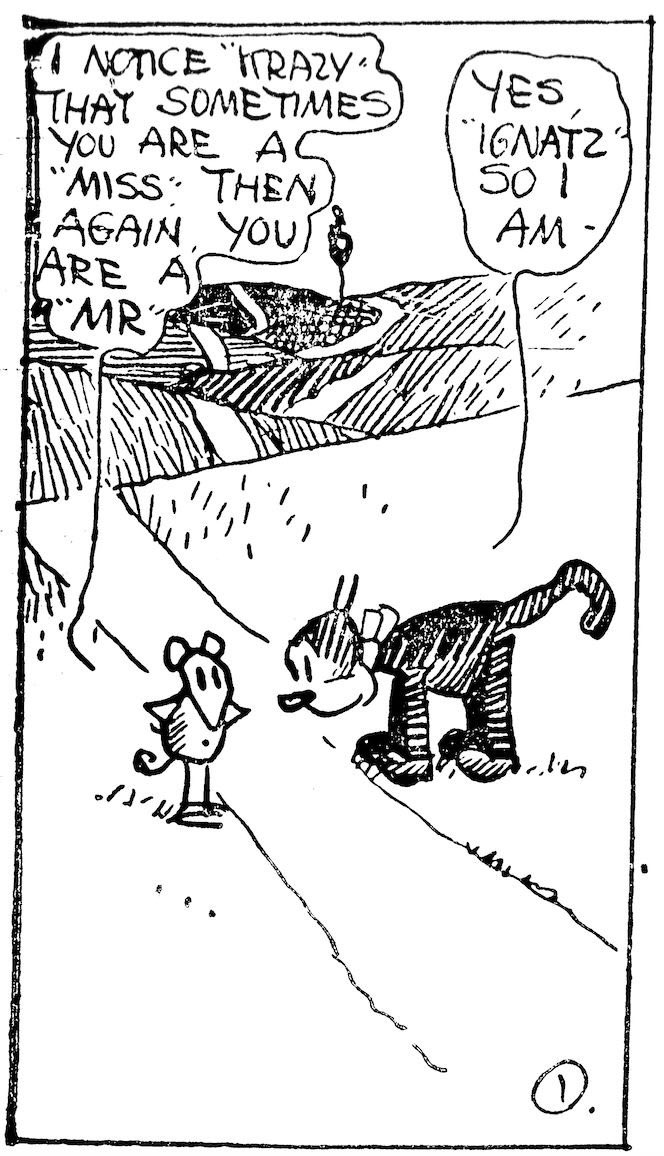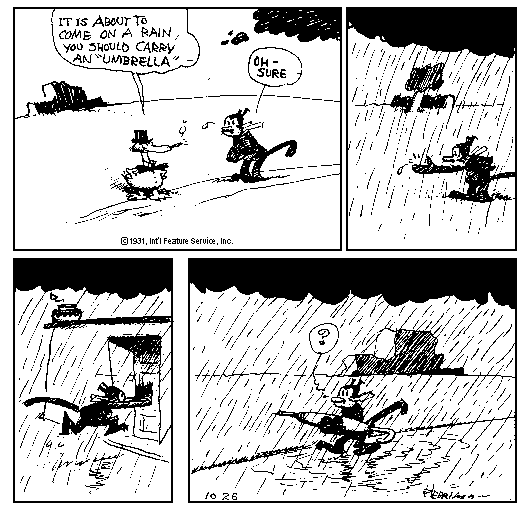fi
It’s possible that I shall make an ass of myself. But in that case one can always get out of it with a little dialectic. I have, of course, so worded my proposition as to be right either way (K.Marx, Letter to F.Engels on the Indian Mutiny)
Thursday, February 13, 2020
tween surrealism and photography are established within historical surrealism. ... logic of Baudelaire's metaphors foreshadows surrealism and takes root in a ...
remained all his life the principal generator of the surrealist movement, declared ... ment dreamed of by Baudelaire and Rimbaud, paralleled as yet in no other ...
CHAPTER 7
The Return of the Surreal: Towards a Poetic and Playful Sociology
Victoria Foster
Edge Hill University, UK
DOI: http://dx.doi.org/10.18778/1733-8077.15.1.07
Abstract
This article argues that the time is ripe to reacquaint sociology and surrealism. Taking inspiration from surrealism’s emphasis on making the ordinary strange through bizarre, lively and sometimes haunting methods might result in a more poetic and playful sociology. The article looks at how this might be applied in practice through drawing on a variety of examples of social research that share some of the tenets of surrealism, not least the latter’s focus on social justice. This enables discussion of a number of methodological concerns stemming from feminist and post-structuralist thought, including the troubling of narrative coherency and the notion of “voice.” Infusing sociology with “a surrealist spirit” requires opening up and moving away from rationality in ways that allow for the exploration of contradictions, irreverence, humor, and paradox.
Victoria Foster
Edge Hill University, UK
DOI: http://dx.doi.org/10.18778/1733-8077.15.1.07
Abstract
This article argues that the time is ripe to reacquaint sociology and surrealism. Taking inspiration from surrealism’s emphasis on making the ordinary strange through bizarre, lively and sometimes haunting methods might result in a more poetic and playful sociology. The article looks at how this might be applied in practice through drawing on a variety of examples of social research that share some of the tenets of surrealism, not least the latter’s focus on social justice. This enables discussion of a number of methodological concerns stemming from feminist and post-structuralist thought, including the troubling of narrative coherency and the notion of “voice.” Infusing sociology with “a surrealist spirit” requires opening up and moving away from rationality in ways that allow for the exploration of contradictions, irreverence, humor, and paradox.
Jill Fenton
First published:16 November 2004 https://doi.org/10.1111/j.1467-8330.2004.00462.x
Abstract
In discussing the lifestyle and practices of the Paris group of the contemporary surrealist movement, this paper contributes to debates within economic and political geography that seek to develop the imagining of alternatives to neoliberal globalisation through practices of resistance, and spaces of political and policy engagement. The everyday life of the surrealist movement, in combining creativity with progressive choices and radical economic practices that oppose capitalism, while intellectually investigating ideas of revolution, a different society and utopia, suggests a perspective that contributes to the imagining of such alternatives. This paper outlines the deeply embedded nature of surrealist activity in opposing capitalism and illustrates, as one member of the surrealist group suggests, in quoting Baudelaire, surrealism's insistence for a world in which “action is the sister of dream”. The paper further contributes to discussion on the role of academics in facilitating spaces of political engagement.
Tessel M. Bauduin
t.bauduin@let.ru.nl
2015
Abstract
In the 1924 Manifesto of Surrealism surrealist leader André Breton (1896-1966) defined Surrealism
as ‘psychic automatism in its pure state,’ positioning ‘psychic automatism’ as both a concept and a
technique. This definition followed upon an intense period of experimentation with various forms of
automatism among the proto-surrealist group; predominantly automatic writing, but also induced
dream states. This article explores how surrealist ‘psychic automatism’ functioned as a mechanism
for communication, or the expression of thought as directly as possible through the unconscious, in
the first two decades of Surrealism. It touches upon automatic writing, hysteria as an automatic bodily
performance of the unconscious, dreaming and the experimentation with induced dream states, and
automatic drawing and other visual arts-techniques that could be executed more or less automatically
as well. For all that the surrealists reinvented automatism for their own poetic, artistic and
revolutionary aims, the automatic techniques were primarily drawn from contemporary Spiritualism,
psychical research and experimentation with mediums, and the article teases out the connections to
mediumistic automatism. It is demonstrated how the surrealists effectively and successfully divested
automatism of all things spiritual. It furthermore becomes clear that despite various mishaps,
automatism in many forms was a very successful creative technique within Surrealism.
Exquisite Corpses: Representations olectivf Violence in the Cole Surrealiist Unconscous
Megan C. McShane is a doctoral candidate in Art History at Emory University.
This paper will address the collective method for producing drawings and collages employed by the Surrealists, known as the cadavre exquis or exquisite corpse. In 1925 the Surrealists began playing the exquisite corpse game using words to produce fantastic sentences. The game was quickly adapted to produce strange and unexpected figural images. Playing the game entailed passing a sheet of paper among participants while folding the paper in order to conceal the previous person's response. Each person would contribute a part of the sentence or,if drawing, a partial image of a body. In the linguistic method, the players followed the approximate syntactical sequence of subject, verb, and predicate. In the visual method, the image of a body was substituted for the sentence. Andre Breton cites the elemental segments to be supplied by each person: "subject,verb, or predicate adjective—head, belly, or legs" {hkmifestos1 79). The first sentence produced provided the unusual name for the game: "The exquisite / corpse / will drink / the young / wine" [Le-cadavre-exquis-boira-le-vin-nouveau]
Megan C. McShane is a doctoral candidate in Art History at Emory University.
This paper will address the collective method for producing drawings and collages employed by the Surrealists, known as the cadavre exquis or exquisite corpse. In 1925 the Surrealists began playing the exquisite corpse game using words to produce fantastic sentences. The game was quickly adapted to produce strange and unexpected figural images. Playing the game entailed passing a sheet of paper among participants while folding the paper in order to conceal the previous person's response. Each person would contribute a part of the sentence or,if drawing, a partial image of a body. In the linguistic method, the players followed the approximate syntactical sequence of subject, verb, and predicate. In the visual method, the image of a body was substituted for the sentence. Andre Breton cites the elemental segments to be supplied by each person: "subject,verb, or predicate adjective—head, belly, or legs" {hkmifestos1 79). The first sentence produced provided the unusual name for the game: "The exquisite / corpse / will drink / the young / wine" [Le-cadavre-exquis-boira-le-vin-nouveau]
THE CATALOUGE OF THE 1936 MOMA SHOW
https://www.moma.org › documents › moma_catalogue_2823_300293441
Fantastic Art, Dada and Surrealism is the second of a series of exhibitions planned to present in ... by the Dada—Surrealist movement of the past twenty years together with cer tain of its pioneers. ... De Baudelaire au surrealisme. Paris
by SC Bett - 1976 - Related articles
This thesis attempts to locate and unravel the poetics of Surrealism. The ... the "•'WALTER Benjamin on Surrealism: The Last Snapshot of the European ...
openmods.uvic.ca › islandora › object › uvic:399 › datastream › PDF › view
Surrealism, is produced by the difference in intellectual level between France ... descent from Mickiewicz, Milton, Southey, Alfred de Musset, Baudelaire, and.
Michael Lowy Radical Philosophy 80 (Nov/Dec 1996)
Surreal Dreamscapes: Walter Benjamin and the Arcades
Michael Calderbank BOOK PDF
Abstract
This article examines Benjamin’s theoretical writings on the dream as a crucial aspect of his engagement with Surrealism. Given his ambivalence towards Surrealism’s potential for mystical thinking, it addresses Benjamin’s encounter in the Arcades Project with the work of Louis Aragon, and its resonances with the writings of vitalist philosopher Ludwig Klages, whom Benjamin had known in his youth. The article traces the ways in which Benjamin’s dream theory formed part of his understanding of the revolutionary project of Surrealism, only to lose its critical force in his later 1930s work, and it suggests ways in which Benjamin might have developed this project more successfully. Sometimes, on awakening we recall a dream. In this way rare shafts of insight illuminate the ruins of our energies that time has passed by. These lines are typically Benjaminian. In a sense, they might stand as a brief exposition of a critical insight to which he would attempt to give concretion in the Arcades Project. However, they are taken not from Benjamin’s mature work, but rather, from the unpublished early text ‘The Metaphysics of Youth,’1 written in 1914. Appropriately, Benjamin (above all writers) is stubbornly resistant to any smooth, teleologically-driven linear chronology of intellectual development. Likewise, Susan BuckMorss uses the analogy, again peculiarly apposite in Benjamin’s case, of ‘development’ in the sense of photography: ‘Time deepens definition and contrast, but the imprint of the image has been there from the start.’ 2 Hence, I ought to qualify at the outset the sense in which it is possible to speak of Benjamin’s interest in the dream as a ‘legacy’ from Surrealism. The nature of this relationship is not akin to a printer leaving an impression on a passive surface, as though Benjamin uncritically assimilated a series of previously alien positions.
A CAVALIER HISTORY OFSURREALISM
BOOK PDF
by Jules-Francois Dupuis (Raoul Vaneigem]
Translated by Donald Nicholson-Smith
Susan LaxtonSURREALISMAT PLAY BOOK PDF
BOOK PDF
by Jules-Francois Dupuis (Raoul Vaneigem]
Translated by Donald Nicholson-Smith
Susan LaxtonSURREALISMAT PLAY BOOK PDF
Lost Profiles
Memoirs of Cubism, Dada, and Surrealism
Philippe Soupault
Translated by Alan Bernheimer
Foreword by Mark Polizzotti
Afterword by Ron Padgett
Paperback - $13.95 $9.77 Save $4.18 (30%)
Description
Reviews & News
Extras
Detailed info
A literary retrospective of a crucial period in modernism—the transition from Dada to Surrealism––via portraits and encounters with its literary lions, including Joyce, Proust, Reverdy, Apollinaire, Crevel and more by the co-founder of the Paris surrealist group.
Poet Alan Bernheimer provides a long overdue English translation of this French literary classic—Lost Profiles is a retrospective of a crucial period in modernism, written by co-founder of the Surrealist Movement. Opening with a reminiscence of the international Dada movement in the late 1910s and its transformation into the beginnings of surrealism, Lost Profiles then proceeds to usher its readers into encounters with a variety of literary lions. We meet an elegant Marcel Proust, renting five adjoining rooms at an expensive hotel to "contain" the silence needed to produce Remembrance of Things Past; an exhausted James Joyce putting himself through grueling translation sessions for Finnegans Wake; and an enigmatic Apollinaire in search of the ultimate objet trouvé. Soupault sketches lively portraits of surrealist precursors like Pierre Reverdy and Blaise Cendrars, a moving account of his tragic fellow surrealist René Crevel, and the story of his unlikely friendship with right-wing anti-Vichy critic George Bernanos. The collection ends with essays on two modernist forerunners, Charles Baudelaire and Henri Rousseau. With an afterword by Ron Padgett recounting his meeting with Soupault in the mid 70's and a preface by André Breton biographer Mark Polizzotti, Lost Profiles confirms Soupault's place in the vanguard of twentieth-century literature.
Praise for Lost Profiles:
"The gentlest of renegades, the most tender of the French avant-garde poets, the co-author of the first literary work of automatic writing (The Magnetic Fields, 1919), Philippe Soupault was a central figure in both the Dada and Surrealist movements but throughout his long life walked under no banner except the one of artistic freedom. In this previously untranslated book, he gives us a collection of richly remembered portraits of some of his best-loved friends from the old days of the new modernism. A young disciple of the short-lived Apollinaire, the translator of Joyce's Anna Livia Plurabelle, the son of one of Proust's jeunes filles en fleurs, Soupault crossed paths with nearly everyone from that time whose name is still remembered today. As a glimpse into that time, these lost portraits are invaluable––and often deeply moving. The chapter about Proust alone is worth the price of admission, and then there is more, much more packed into the pages of this small, indelible book. Bravo to Alan Bernheimer for having given it to us."––Paul Auster, author of Report from the Interior
"Poets must encourage each other because time is indifferent to the lives that flow through it. Time is what we are made of, but we are a rare school of fish that can see, in Rimbaud's sense, the substance that everyone disregards even as it dissolves them. We have to be young because we are the only force that can slow time down to reveal the beauty of its devastation. Reading Alan Bernheimer's splendid translation of Soupault's memoir, I forgot that it was a translation, that it was Soupault writing or talking about another time, about his friends of one century past. I read myself into these vivid and virile (so, sue me!) assaults on time, and Time stopped."––Andrei Codrescu, author of The Posthuman Dada Guide: Tzara and Lenin Play Chess
"Philippe Soupault was present at the creation of both Dada and Surrealism—collaborating with André Breton to produce The Magnetic Fields, the first book of automatic writing—before going his own way as a poet, novelist, and journalist. In this present volume, Soupault's fierce independence, deep wit, and generous heart shine through a set of sharply observed portraits of European writers—fellow geniuses, most of them known to him personally. Alan Bernheimer's fine translation allows Soupault's vibrant voice to come to life in our time, and to reanimate in turn some of the greatest spirits of the past century's literature—a marvelous and much-needed apparition."––Andrew Joron, author of Trance Archive: New and Selected Poems
"In this dazzling book—adroitly, smoothly & accurately translated by poet Alan Bernheimer—poet & co-founder of Surrealism Philippe Soupault trains his great secret eye & ear to auscultate an astounding range of core 20th century literary figures he knew personally. And does so with serenity, humor & profound insight. Like none of the academic histories covering this period, no matter how well written and documented, this book makes you say as you devour it: 'Wish I had been there.' Enough said, I'm going to call René Crevel right now."––Pierre Joris, author of Barzakh: Poems 2000-2012
Philippe Soupault (1897-1990) served in the French army during WWI and subsequently joined the Dada movement. In 1919, he collaborated with André Breton on the automatic text Les Champs magnétiques, launching the surrealist movement. In the years that followed, he wrote novels and journalism, directed Radio Tunis in Tunisia, and worked for UNESC
Subscribe to:
Posts (Atom)





